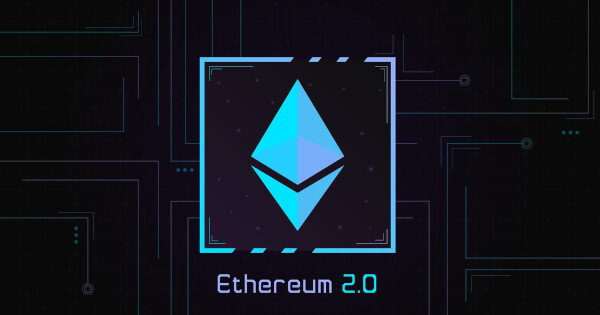How Indigenous perspectives can drive climate innovation for a just transition: IBM partners with Net Zero Atlantic in Canada

The windy province of Nova Scotia is located on Canada’s Atlantic coast and consists of part of the Mi’kmaqi, the traditional territory of the Mi’kmaq First Nation. In recent years, Nova Scotia has become a promising location for a clean energy transition, with some of the world’s fastest offshore wind speeds and potential for hydrogen development.
But too often, conversations about the impacts of energy development in the region do not include Indigenous perspectives or are inaccessible to those outside the energy industry. Many vulnerable communities around the world need support to participate in the energy transition. While climate technology helps minimize impacts and make informed energy decisions, the next step in a just transition is democratizing this information and getting it into the hands of communities.
Implementing science and technology along with Indigenous knowledge and community engagement is an essential approach to solving climate challenges, known as “seeing with your own eyes.” To support a just transition, IBM® has partnered with non-profit Net Zero Atlantic through the IBM Sustainability Accelerator to support informed climate decisions and engage Atlantic Canada’s First Nations communities in the clean energy transition.
A user-first approach to climate technology
Net Zero Atlantic’s open source Atlantic Canada Energy System (ACES) model is a powerful tool for analyzing and predicting energy generation and infrastructure development scenarios. Accurately describing and interpreting future energy system opportunities often requires users to have both computing power and technical knowledge, making these tools often difficult to access.
IBM Sustainability Accelerator and Net Zero Atlantic set out to transform this complex resource into a user-friendly and accessible application that takes a user-centric approach and supports the Mi’kmaq community’s role in energy planning and the net-zero transition. The first phase of the project, IBM Garage, has begun.
“This is a very new way of looking at energy system models – actually from the user’s perspective,” says Sven Scholtysik, research director at Net Zero Atlantic. “Usually it’s the other way around. “People are trying to create the most accurate, most advanced models possible, but there is little insight into how people use them and what motivates them to use them.”
The design of “ACES Lite” focuses on allowing users to easily navigate complex graphs, geographic models, and data interpretation. The application puts user experience first by leveraging IBM technologies such as hybrid cloud and IBM® Cognos® Analytics, along with the expertise of IBM Consulting® volunteers. And through Net Zero Atlantic’s long-standing relationship with the Unama’ki Natural Resources Institute in Cape Breton, Nova Scotia, ACES Lite has undergone significant interactive testing sessions with Mi’kmaq users to generate usability feedback and further refine the tool. .
“One of our key roles is to engage with the community. We do science, but we also engage with the community to bring in traditional knowledge that can be incorporated into that work,” says Lisa Young, executive director of the Unama’ki Institute of Natural Resources. . “The idea driving this development was, ‘How can this tool inform how communities engage in conversations about the energy transition?’ How does it help you make informed decisions?’”
The importance of seeing with two eyes and collaborating
Implementing technology with Indigenous knowledge is an approach known as looking both ways, explained by Mi’kmaq elder Dr. Albert Marshall. Lisa Young shares that this is the guiding approach of the Unama’ki Natural Resources Institute and an approach integrated into projects at Net Zero Atlantic and IBM.
“Seeing with your own eyes means leveraging the best of Western science and technology while combining it with the best of Indigenous perspectives, knowledge and wisdom. So, how can we use that knowledge in a good way to have a positive impact on the environment,” says Young. “Bringing that perspective requires extensive engagement with the community to see how we can take knowledge from the land and advance our work.” We need to help guide you.”
Scholtysik emphasizes the value of collaboration with IBM and the Unama’ki Natural Resources Institute on this project. He cited the expertise and passion of IBM’s project teams as a highlight of his organization’s time in the IBM Sustainability Accelerator. Other communities across Canada, such as the Government of Nova Scotia, offshore wind groups, academia and research teams, have also participated in the ideation and testing process so far, expressing excitement about the tool’s potential application across the province.
What’s next for ACES Lite?
As a next step, IBM and Net Zero Atlantic will continue to pilot ACES Lite with user groups in Cape Breton while also exploring new innovations and additional features. Feedback from the community helped us identify areas where we could improve the user experience. For example, there are opportunities to improve aspects of the visualization of land use associated with the development of various clean energy technologies and to incorporate features that represent those economic impacts. project. Scholtysik hopes to have this application available to the public by the end of 2024, and also sees the potential for deployment in other regions where the energy transition is underway.
“The energy system model is a great tool that people can easily use,” says Scholtysik. “Models like ACES Lite make it easier for people to strategically plan future energy systems that are sustainable, reliable and affordable. But what we really need to do is assess the impact of energy system transition from a community perspective, and I think ACES Lite is the first step in that direction.”
Learn more about IBM Sustainability Accelerator
Was this article helpful?
yesno



